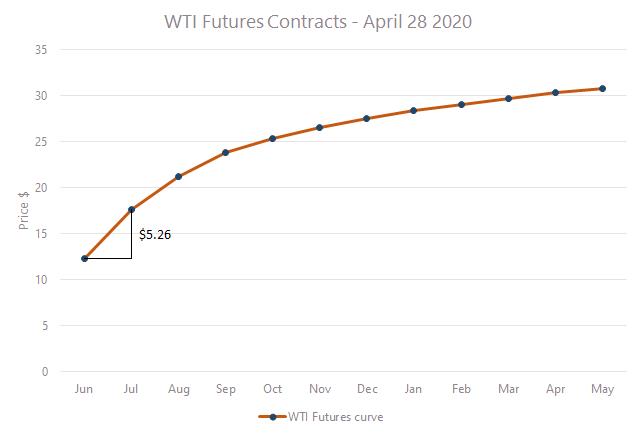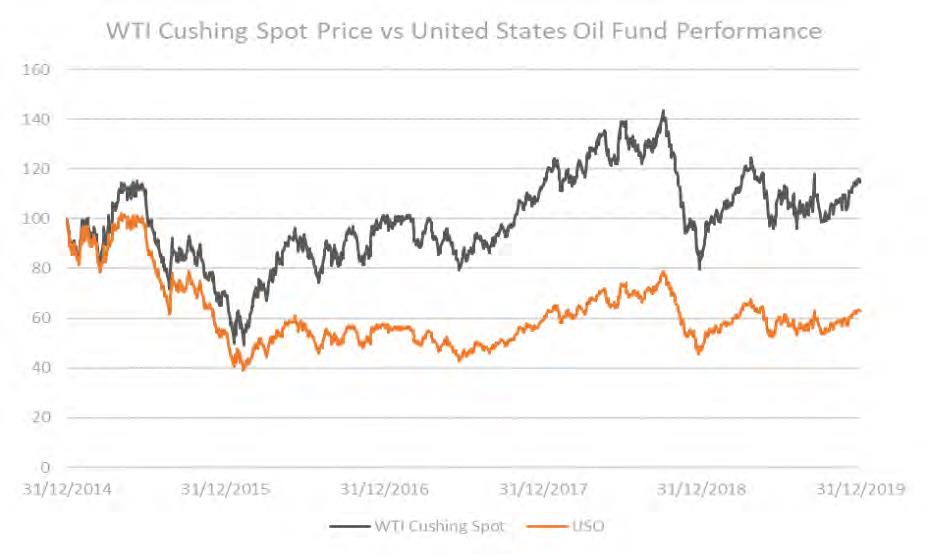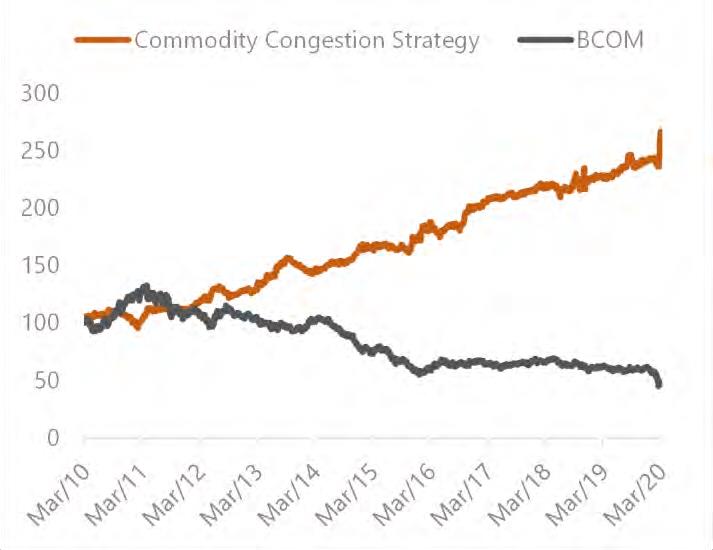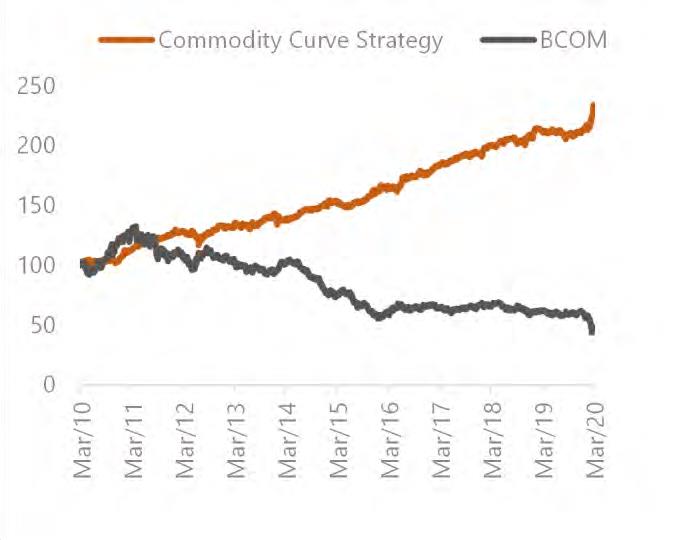
Kevin Gray
Chief Investment Officer
![]() 5 min read
5 min read
There will be blood
There will be blood
| Paul: | Are you Daniel Plainview? |
| Daniel: | Yes. What can I do for you? |
| Paul: | You look for oil. |
| Daniel: | That's right. |
| Paul: | What do you pay for a place that has it? |
| Daniel: | That depends. |
| Paul: | What does it depend on? |
| Daniel: | On a lot of things. |
- Paul Sunday & Daniel Plainview – There Will Be Blood (2007)

The financial system has been rocked in more ways than one in the early part of 2020.
The market in which we have seen the wildest swings has undoubtedly been oil, leaving investors wondering what has left it particularly exposed to the current crisis, the mechanics of investing in oil in general, and what the future holds for the commodity formerly known as ‘liquid gold’.
In crude terms, what has happened?
Significant price moves in oil are by no means a new phenomenon, albeit usually spread over more than a single trading session.
At the turn of the Millennium WTI spot (the price of physical, can touch it, oil) was priced around $25 per barrel. Then, due to a dramatic change in demand dynamics, led by an oil hungry, growing Chinese economic powerhouse, exploded to around $140 in 2008. The widely held consensus at this point was that the only way was up for this finite resource. The Global Financial Crisis promptly put paid to that theory, sending oil crashing back down, before a recovery to over $100 by 2011, where it remained fairly rangebound, at least by today’s standards, until 2014.
Just as China had dramatically shifted demand dynamics in the noughties, by 2014 the oil landscape had changed significantly on the supply side too; OPEC had long since become worried about the US’ increased shale production and the effect this would likely have on the oil world order, and OPEC members’ place in it, moving forward.
With this in mind OPEC decided to combat the US shale boom by launching a price war, flooding the market with oil and depressing the price, a problem for US shale due to the higher breakeven cost of producers – OPEC were and are attempting to run US shale out of town. Cue a very sharp drop in the price of oil, from which it has never truly recovered, as the war has never truly ended.
Enter 2020 – while previous shocks have tended to be either demand or supply driven, the combination of demand destruction brought on by Covid-19 as well as a renewal of the price war between OPEC, Russia and the United States has made this round of oil price volatility truly unprecedented.
That potent combination sent oil plummeting over February and March, before a tweet from the US President, suggesting that a deal to cut production by 10m barrels per day was imminent, sent the price skyward 30% in a day. A production cut, all 10m barrels per day that was suggested, was agreed, but the price fell again on the back of the realisation that estimates of the demand shock were at 20m barrels per day. (There was still 10m too many barrels being produced per day)
Then, on Monday April 20th, the oil price dropped into negative territory.
How can oil go negative?
Up until this point, many believed that negative oil prices were an impossibility. However, we were now into the realms of the fundamental structural make up and mechanics of the market being tested.
The simultaneous combination of oversupply and destruction of demand that had characterised 2020 to this point led to the world literally running out of space to store oil, and therefore storing had never been more expensive.
We now come onto the mechanics of how one tends to invest in oil.
The majority of participants in the market will access oil through futures; a contract stipulating that one will pay $x per barrel for delivery on a certain date in the future. This allows producers and consumers of oil to hedge against price movement, and allows investors and speculators to try to profit from them. The futures price does not equal the spot price.
The ‘front month future’ i.e. that closest to expiry, at which point the holder is delivered the oil, will be priced closest to the actual spot price of physical oil. In normal market conditions one would expect the futures curve to be upward sloping (known as contango) i.e. it costs a little more for each additional month you lock in the price for – this makes sense as you are effectively transferring the cost of storage to somebody else; if this is charged on a monthly basis, then the further out on the curve, the more months of storage you are paying for.
For investors, who don’t actually want to take delivery of the oil, they will need to sell their futures contract before expiry; in normal market conditions not a problem, someone will want the oil. However, when storage space runs out to the point that it costs considerably more to transport and store the oil (especially in the case of land-locked WTI) than it would possibly be worth, we enter an environment where the holders of the WTI future about to expire last week were willing to PAY $35 per barrel purely to not have to take actual delivery.
This sums up 2020.
What an entry point! I’m buying. How can I do it?
‘Ladies and gentlemen, if I say I’m an oil man, you will agree.’ Daniel Plainview – There Will Be Blood (2007)
The obvious answer would be to buy an oil ETF – and many have; ownership of the United States Oil Fund (USO), the biggest oil Exchange Traded Product in the world, is up 500% month on month on trading platform Robinhood. Retail investors are piling in.
USO is ‘designed to track the daily price movements of West Texas Intermediate (“WTI") light, sweet crude oil.’ These words are taken directly from the USO website.
HOWEVER, herein lies the issue on how investors, including ETFs, access oil – by buying futures.
There is ordinarily an upward slope to the futures curve to reflect the cost of storage. It would therefore make sense that as the cost of storage increases, so too does the steepness of the curve i.e. the difference in price between the June future, July future etc etc.
The curve has never been steeper (known as supercontango); there has never been more of a difference in price between the contracts as one goes further out into the future.
This is especially important when considering an oil ETF.
As the ETF, and therefore in effect the investor, will not be taking physical delivery, the front month future will be sold before expiry, and the next month future purchased (depending on the roll mechanics of each individual ETF).
On the chart below, we can see the effect of this:

Source: Fortem Capital, Bloomberg
If the June contract were expiring in the next few days, in order to avoid delivery while maintaining exposure, the ETF must ‘pay-to-play’ by selling June and buying July – a loss of $5.26, and as long as the curve remains this shape, it will take a similar loss on each roll, each month. If this loss is greater than any corresponding increase in the front month contract it holds over the month, the ETF will lose money even as the oil price increases – this current figure corresponds to a 43% increase in the front month future before you would actually make any money!
Incidentally, this ‘cost of carry’, even in more normal times, is why oil ETFs are notoriously poor at tracking the spot price of oil:

Source: Fortem Capital, Bloomberg Data from 01/01/2015 – 31/12/2019
This constant bleed is why the United States Oil Fund (USO) was trading at $2.50 early this week, when oil was trading closer to $20 per barrel, having begun its life priced the same.
On Tuesday April 28, they announced a 1 for 8 stock split i.e. replaced investors’ 8 shares of $2.50 with a new share valued at $20; this makes the product look more like it is tracking oil, as it is now priced roughly the same as a barrel – do not be fooled.
Ladies and gentlemen if I say I’m an oil tracker, you will not agree.
But surely there is some way to profit from all this? More than one…
Commodity Curve Strategy:
If the curve is upward sloping, there is a negative yield to the holder of a futures contract as it ‘rolls down the curve’ towards expiry. However, as can be seen from the previous charts, steepness of this negative ‘roll down’ is not equal between contracts.
If one were to be short the contract with the most negative roll yield, and long the contract with the least negative roll yield, the difference between them (which has never been more) can be harvested, while insulating the strategy from parallel shifts in the curve as a whole.


131/03/2010 to 31/03/2020
231/03/2010 to 31/03/2020 – Observed Daily
BCOM – Bloomberg Commodity Index
SIMULATED PAST PERFORMANCE: Past performance data shown in this communication includes performance data derived from back-testing simulations. This is provided for illustrative purposes only. Details of the index methodology are available on request.Priced in gold, the MSCI World is down over 10% YTD, and back to the same level it was in the mid 1990s.
Commodity Congestion Strategy:
As discussed, oil (and other commodity) ETFs must roll their futures contracts in order to not take physical delivery. They do this on pre-defined dates. The very act of selling the front month future will put downward price pressure on it, and similarly buying further out put upward price pressure on that contract. One can trade ahead of this process, shorting the front month, and going long further out in order to profit from the phenomena, while again not taking on overall long exposure to oil.


131/03/2010 to 31/03/2020
231/03/2010 to 31/03/2020 – Observed Daily
BCOM – Bloomberg Commodity Index
SIMULATED PAST PERFORMANCE: Past performance data shown in this communication includes performance data derived from back-testing simulations. This is provided for illustrative purposes only. Details of the index methodology are available on request.
And is anybody doing this?
At Fortem Capital, we employ both strategies, amongst other structurally uncorrelated strategies, in the Fortem Capital Alternative Growth Fund as well as in the Diversifier Portfolio of the Fortem Capital Progressive Growth Fund.
Both funds have enjoyed an outstanding start to the year when compared to their peers.
Please do not hesitate to contact the team for more information.
To learn more about accessing individual strategies or Fortem Capital funds:
Tel: 020 8050 2904
Email: sales@fortemcapital.com
Past performance is not necessarily a guide for the future. Forecasts are not reliable indicators of future performance. The value of investments, and the income from them, can go down as well as up and the investor may not get back the amount originally invested. The data is sourced from Fortem Capital Limited and external sources. The data is as of the date of this document and has been reviewed by Fortem Capital Limited.
– This document has been issued and approved as a financial promotion by Fortem Capital Limited for the purpose of section 21 of the Financial Services and Markets Acts 2000. Fortem Capital Limited registration number 10042702 is authorised and regulated by the Financial Conduct Authority under firm reference number 755370.
– This document is intended for Professional Investors, Institutional Clients and Advisors and should not be communicated to any other person.
– The information has been prepared solely for information purposes only and is not an offer or solicitation of an offer to buy or sell the product.
– Data is sourced from Fortem Capital Limited and external sources. The data is as at the date of this document and has been reviewed by Fortem Capital Limited.
– Information, including prices, analytical data and opinions contained within this document are believed to be correct, accurate and derived from reliable sources as at the date of the document. However, no representation or warranty, expressed or implied is made as to the correctness, accuracy or validity of such information.
– Fortem Capital Limited assumes no responsibility or
liability for any errors, omissions or inaccuracy with respect to the information contained within this document.
– All price and analytical data included in this document is intended for indicative purposes only and is as at the date of the document.
– The information within this document does not take into account the specific investment objective or financial situation of any person. Investors should refer to the final documentation and any prospectus to ascertain all of the risks and terms associated with these securities and seek independent advice, where necessary, before making any decision to buy or sell.
– The product may not be offered, sold, transferred or delivered directly or indirectly in the United States to, or for the account or benefit of, any U.S. Person.
– The Fortem Capital Progressive Growth Fund is a Sub-Fund of Skyline, an open-ended investment company with variable capital incorporated on 1 June 2010 with limited liability under the laws of Ireland with segregated liability between Funds. The Company is authorised in Ireland by the Central Bank of Ireland pursuant to the UCITS Regulations.
“NOTICE TO INVESTORS DOMICILED OR RESIDENT IN
SWITZERLAND – The interests in the UCITS Fund and any related services, information and opinions described or referenced in this document are not, and may not be, offered or marketed to or directed at persons in Switzerland (a) that do not meet the definition of “qualified investor" pursuant to the Swiss Federal Act on Collective Investment Schemes of 23 June 2006 (“CISA") (“Non-Qualified Investors"), or (b) that are high net worth individuals (including private investment structures established for such high-net worth individuals if they do not have professional treasury operations) that have opted out of customer protection under the Swiss Federal Financial Services Act of 15 June 2018 (“FinSA") and that have elected to be treated as “professional clients" and “qualified investors" under the FinSA and the CISA, respectively (“Elective Qualified Investors").
In particular, none of the information provided in this document should be construed as an offer in Switzerland for the purchase or sale of the interests or any related services, nor as advertising in Switzerland for the interests or any related services, to or directed at Non-Qualified Investors or
Elective Qualified Investors. Circulating or otherwise providing access to this document or offering, advertising or selling the interests or any related services to Non-Qualified Investors or Elective Qualified Investors may trigger, in particular, approval requirements and other regulatory requirements in Switzerland.
This document does not constitute a prospectus pursuant to Articles 35 et seqq. FinSA and may not fulfill the information standards established thereunder. No key information document pursuant to Swiss law has been established for the interests. The interests will not be listed or admitted to trading on a Swiss trading venue and, consequently, the information presented in this document may not fulfill the information standards set out in the relevant trading venue rules."
For more information on the investment philosophy or any of Fortem’s investment offerings, please do not hesitate to contact the team, we would be delighted to hear from you

 ABOUT
ABOUT